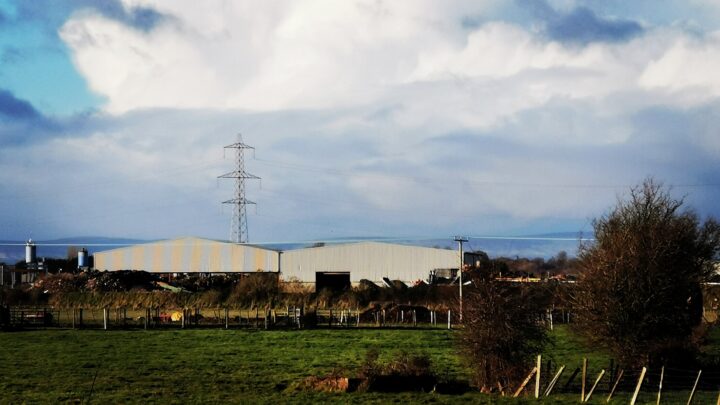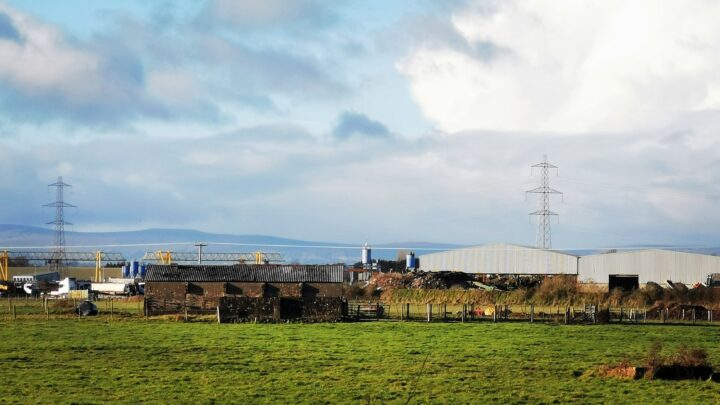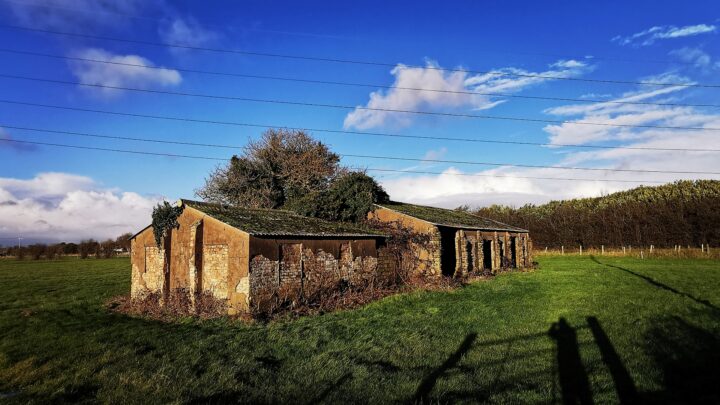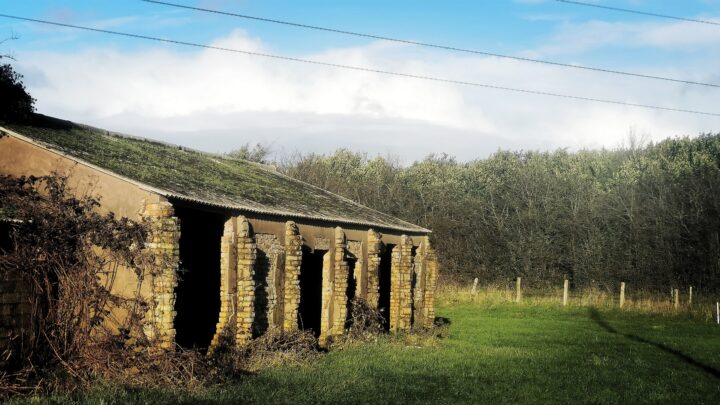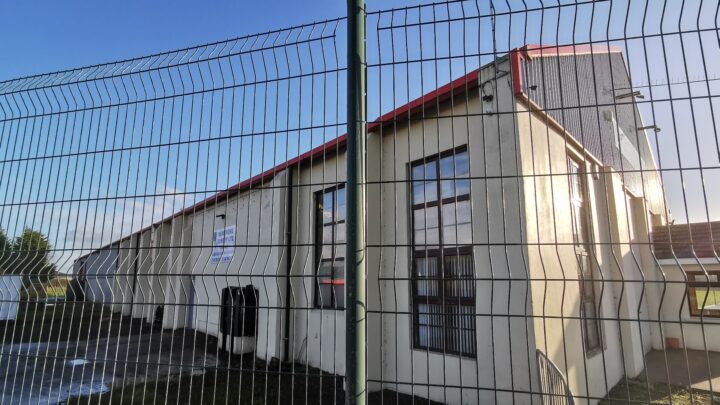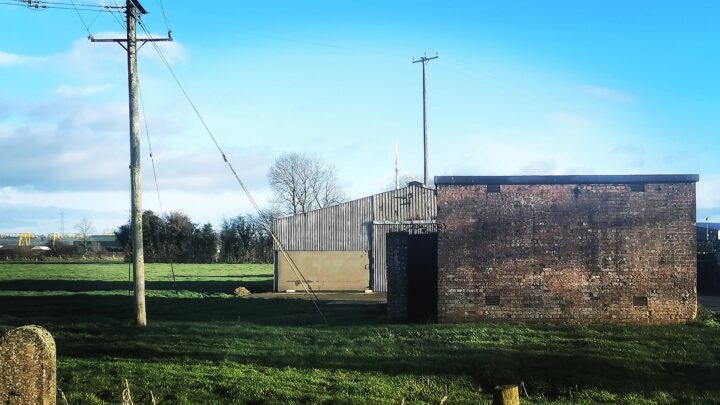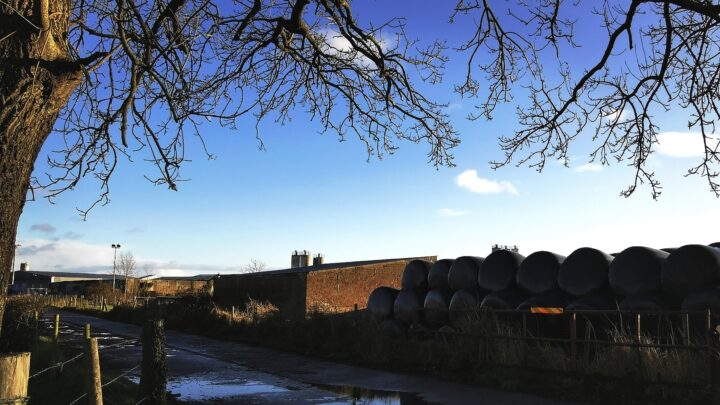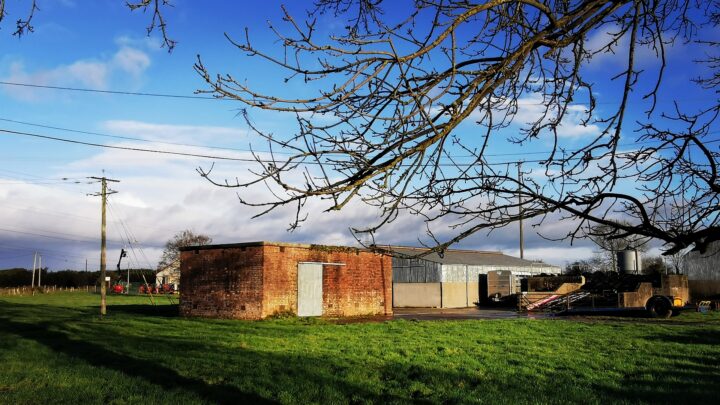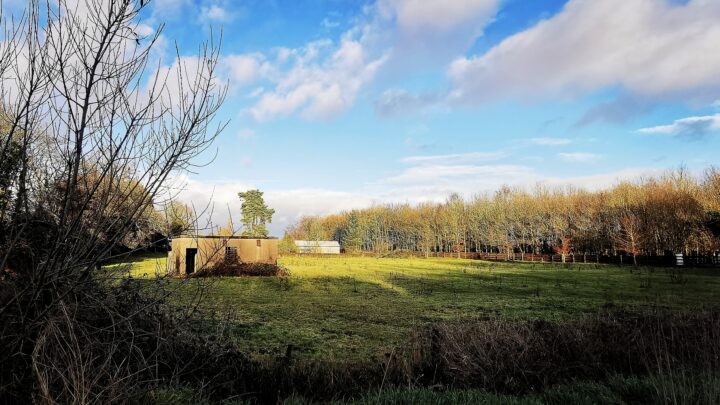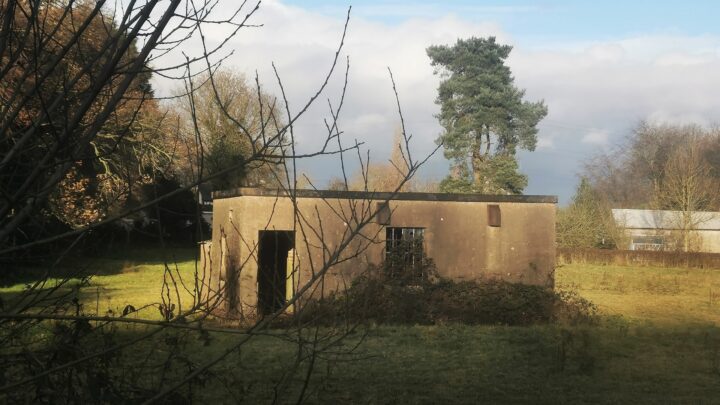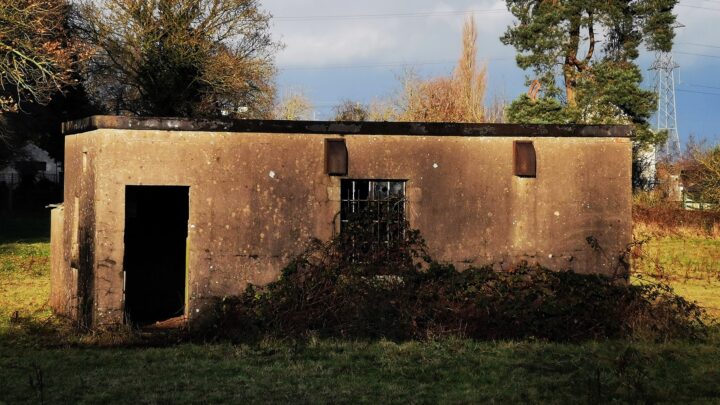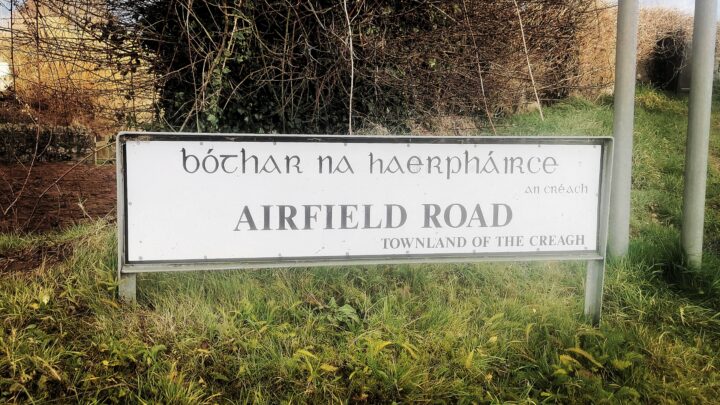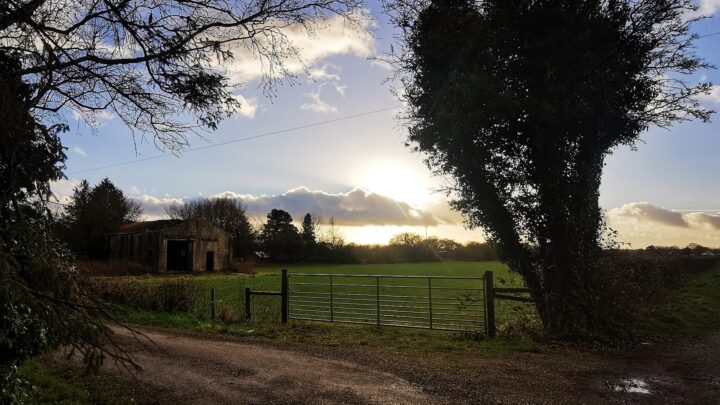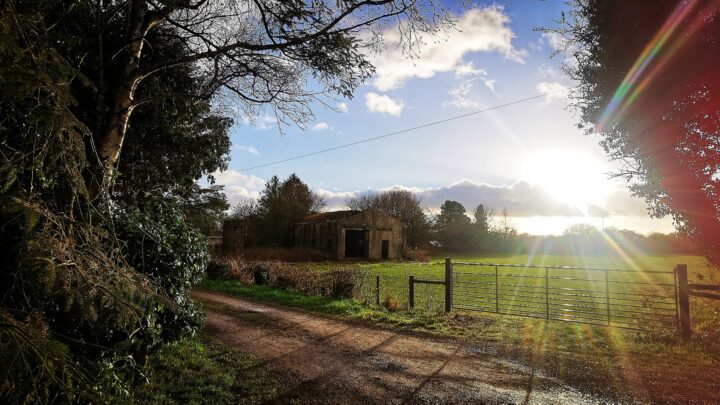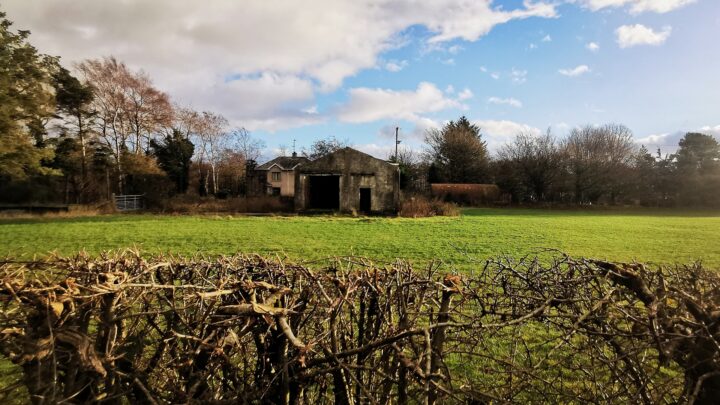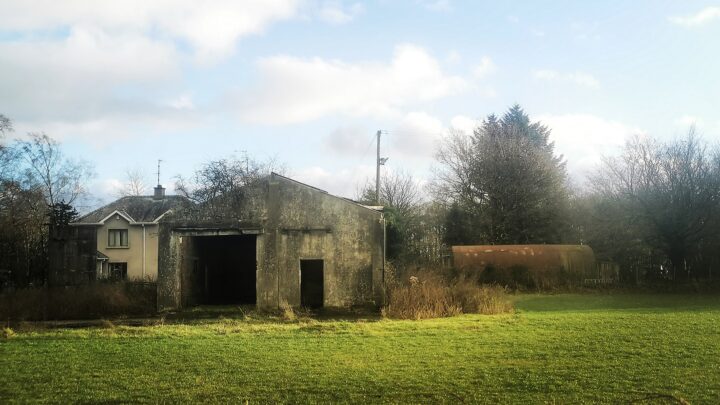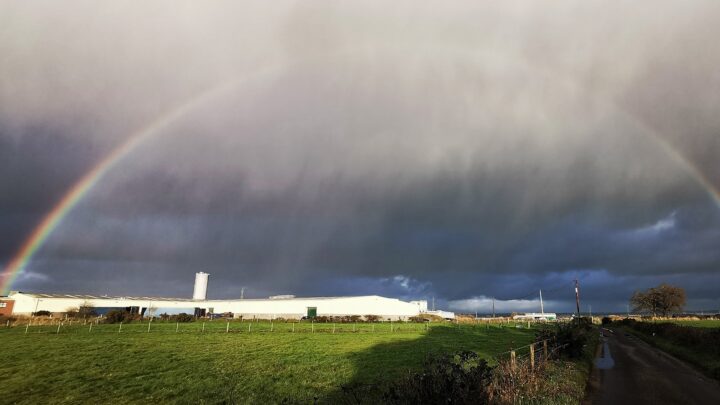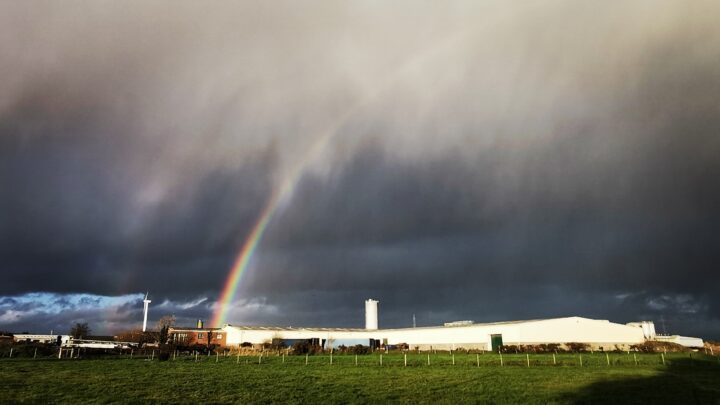During the Second World War, crews from both the Royal Air Force and the United States Army Air Force made use of the airfield facilities at Toome, Co. Antrim.
About a mile west of Toome in Co. Antrim lie the scattered remains of a former military airfield. During the Second World War, Toome Airfield was a Royal Air Force satellite station for the nearby Cluntoe Airfield. It also operated as a United States Army Air Force Combat Crew Replacement Center.
Before the outbreak of the Second World War, around fifty landowners farmed agricultural land around Toome. In 1941, the process of requisitioning the land for use as an airfield began. There were several issues relating to the viability of the site during the planning stages. Foremost among these was the risk of flooding from the nearby Lough Neagh, River Bann, and River Moyola. The latter of these rivers split the site in two with the functional part of the airfield on one side and domestic activities on the other. A narrow bridge would connect the two and plans would need to be in place should anything happen to this single access point.
The American bombers groan towards the aerodrome at Toomebridge, the American troops manoeuvre in the fields along the road, but all of that great historical action does not disturb the rhythms of the yard. There the pump stands, a slender, iron idol, snouted, helmeted, dressed down with a sweeping handle, painted a dark green and set on a concrete plinth, marking the centre of another world.
The Air Ministry finally approved plans and construction began in January 1942. As expected, the waterlogged ground played havoc with plans, and the building of Toome Airfield took much longer than expected. The completed airfield site consisted of three concrete runways, 30 pan-type hardstandings, around 150 buildings, and two pairs of T2 hangars. A taxiway of 3 miles long connected the tarmac-reinforced runways. At around 1,780 yards by 50 yards, Runway 2 was the largest. Runway 1 measured around 1,300 yards by 50 yards, and the final runway ran to a length of around 1,385 yards.
R.A.F. Toome opened and the first members of the Royal Air Force arrived on 2nd January 1943. Within a few months, the United States Army Air Force had expressed an interest in the site. From 5th July 1943 A Flight, R.A.F. no. 104 (Transport) Operational Training Unit operated from Toome. Their Vickers Wellington bomber base was at the nearby R.A.F. Nutts Corner, Co. Antrim.
The formal handover of R.A.F. Toome to the 8th U.S.A.A.F. took place on 26th July 1943. The airfield then operated as U.S.A.A.F. Station 236 until October 1944. Under American control, the site was a training and storage facility. American engineers constructed additional finger-type standings for up to 50 further planes.
From 23rd August 1943, during occupancy by the United States military, Toome Airfield saw use as a Combat Crew Replacement Center. The U.S.A.A.F. used a total of four sites in Northern Ireland to train bomber crews between 1942 and 1944. Toome was the first of the four to become operational with the arrival of Martin B-26 Marauders and Douglas A-20 Havocs of 3rd C.C.R.C.
By August 1944, American activity at Toome was at its peak with 158 medium bomber crews trained. Although 3rd C.C.R.C. fell under 8th U.S.A.A.F., these crews joined operational units within 9th U.S.A.A.F. The training courses were a 2-3 week refresher session to add to training already received in the U.S.A. Subjects included navigation and communications on-site and gunnery and bombing runs over the waters of Lough Neagh. Nearby towns such as Magherafelt provided trainee airmen with somewhere to relax in their downtime. Local residents also became regular visitors to the airfield for parties, concerts, dancing, and the showing of American films in the airfield’s picture house.
During its time at U.S.A.A.F. Station 236, Toome was a series of dispersed billets, mess halls, classrooms, and administrative buildings. American aircrews used British bicycles to navigate the site, and local anecdotes suggest there were many accidents as fast-pedaling Americans grew used to the British braking systems. Some locals still suggest there is a wealth of old destroyed bicycles buried around the perimeter.
We departed on 17th August (1943) by train for Warrington, where we spent the night. The next day we flew from Burtonwood in the back of a B-17 to Toome where the 9th Air Force had a Combat School. We did a lot of flying, mostly formation flying, for several weeks. I had a couple of flights in the old short-wing B-26. On Tuesday 12th September, we went from Belfast to Liverpool on the SS Borinquin, a Cuban ship.
The American military handed the airfield back to the R.A.F. on 7th November 1944. A later transfer to the Royal Navy took place in 1947, but there was little flying activity from Toome during this time. February 1953 saw the runways resurfaced with plans to use the airfield as a satellite to nearby Cluntoe again. However, by April 1954, the Navy placed the site in reserve, under the control of R.N.A.S. Eglinton, Co. Londonderry. Toome ended its days as a Naval Repair Yard before closing in 1959.
In the years and decades following the airfield’s closure, much of the land has returned to agricultural use. Several large-scale businesses operate in and around the remains of former runways. Across the site, there remains evidence of the many Second World War-era buildings, most in a dilapidated condition.
| Start Date | End Date | Unit |
|---|---|---|
| July 1943 | September 1943 | A Flight R.A.F. no. 104 (Transport) Operational Training Unit. |
| 3rd Combat Crew Replacement Center, U.S.A.A.F. | ||
| 18th Weather Squadron, U.S.A.A.F. | ||
| 34th Station Complement Squadron, U.S.A.A.F. | ||
| 556th Service Squadron, U.S.A.A.F. | ||
| 1056th Quartermaster Company, U.S. Army. | ||
| 1110th Signal Company, U.S. Army. | ||
| 1253rd Military Police Company, U.S. Army. | ||
| 1561st Ordnance Supply and Maintenance Company, U.S. Army. | ||
| 2050th Engineer Fire Fighting Platoon, U.S. Army. |
Many aviation incidents that occurred in Northern Ireland and the surrounding area involved planes departing from the airfield at Toome, Co. Antrim.
